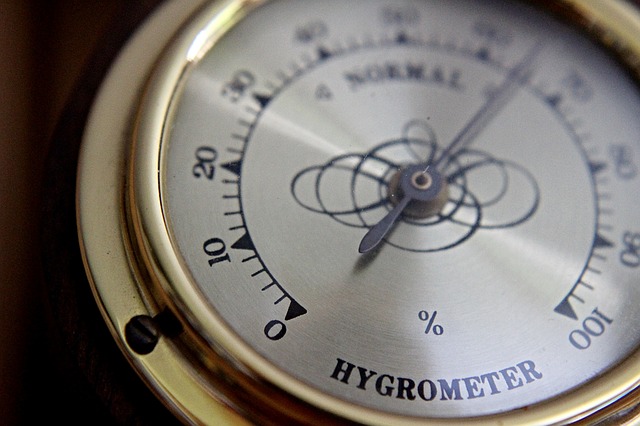Here in Green Country, the moisture in the air plays a huge role in our weather, as well as the performance of our wood floors. Wood is a naturally porous material that responds to humidity. When there’s more moisture in the air, wood expands. When the air is dry, wood contracts. That’s why sometimes you’ll notice occasional cupping of your wood floors during periods of low or high humidity. In most cases, your floors will adjust, but if the changes in humidity are extreme, it can cause permanent damage. So what can you do about it? How can you maintain optimal humidity in your home to protect your hardwood floors? Let’s go over a few tips that can help.
Invest in a Hygrometer
A hygrometer is a device that measures humidity. Hygrometers range in price from a few bucks for a small, digital version to a few hundred for a fancier, wall-mounted unit. Whatever your preference, if your home in eastern Oklahoma has hardwood floors, get one. Pay attention to it. The optimal humidity range for your wood floors is between 35-55 percent. Occasional fluctuations outside that range won’t hurt your floors long-term, but if you notice it’s particularly humid or dry for more than a day or so, you might want to take steps to control the humidity inside your home.
Pay Special Attention in the Winter Months
The climate in and around Tulsa is considered “humid subtropical,” with moisture frequently coming into our area from the Gulf of Mexico. Under normal conditions, our humid summers rarely have a negative effect on wood floors. Winter, however, is another story. Not only is there less humidity in the colder air, but our heating systems and furnaces tend to dry out the air inside our homes. In short—winter is the time when damage to your hardwood floors is most likely.
Consider Humidifiers
In particularly dry conditions (like the winter months), you might want to invest in a humidifier to inject more moisture into the air. Since it can be cumbersome to place small freestanding humidifiers all over the house, consider buying a whole-home humidifier that connects to your HVAC system. Look for one with its own blower control (so it doesn’t just run when the furnace runs). A whole-home humidifier is one of the most effective ways to maintain optimal humidity levels in the home because it will turn on and off automatically as needed to keep humidity levels consistent—just like your thermostat maintains temperature.
Open the Windows on Mild Days
Another way to balance the humidity levels of your wood floors with the outside world is to open the windows once in a while on mild, comfortable days. You won’t see too many of these days in the summer, but they can be quite frequent in the fall—and even in springtime in the days following a storm. Take advantage of days like these, not just for your floors, but also to freshen the air in your home.
Do I Also Need a Dehumidifier for My Wood Floors?
If humidifiers are recommended when the inside air is dry, is it also helpful to have a dehumidifier when the air becomes too humid? It can be helpful, but not usually mandatory. Under normal conditions, Tulsa’s humidity levels won’t harm your wood floors even on the muggiest days. The only time you might be concerned is during long periods of heavy rain or fog when the humidity stays above 80 percent for days on end. In those cases, running a dehumidifier for a couple of days wouldn’t hurt.
Maintaining optimal humidity levels in the home will ensure your wood floors stay beautiful and functional for many years to come. Looking to install new wood floors in your home? Give Renaissance a call at 918-298-4477 for a free estimate or fill out our contact form here and we’ll get back to you.

